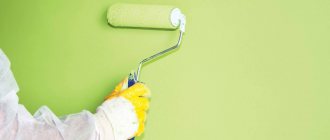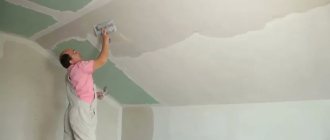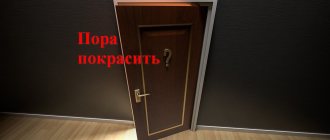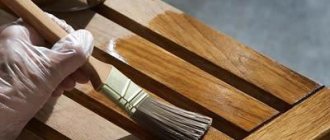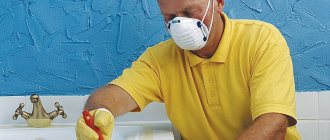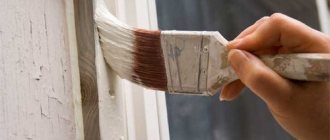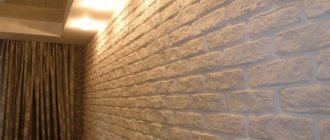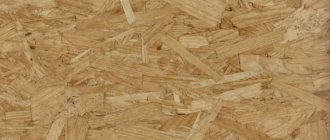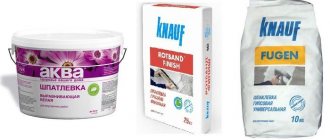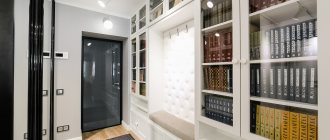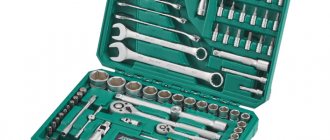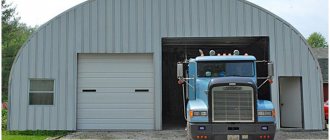Over the many years of use, the floor boards have been painted more than once. Old paint cracks, causing chips. In this article we will focus on the topic: how to paint old and new wooden floors.
Why prime your car before painting?
Vehicle owners often want to save money when selecting materials for upgrading the body. Painting a car without primer means violating technology. This is due not only to savings, but also to the attitude towards the car. After minor accidents and damage, the value of transport decreases. Car owners believe that they can do without a primer if they immediately apply new paint to the car. This manipulation will save from 15 to 25% of money, but this is fraught with consequences. Painting a car over old paint without a primer is a common practice for resellers. They own approximately 40% of the secondary market, which is why this method is popular.
It is impossible to understand the quality of the work done by looking at a fresh coating. Have all technological steps been followed? If a car was painted over old paint without a primer, then after 6 months the coating will begin to flake off.
It is advisable not to skimp on materials and choose the best. Then the coating will last a long time - from 7 to 10 years.
What tools will you need?
In most cases, no complicated tools will be needed.
You need to worry about protective equipment - a respirator, gloves, goggles.
You should also purchase several brushes of different sizes and a roller with a long handle, preferably a telescopic one, since it is easier to adapt to the required parameters.
Small brushes are needed to make it convenient to paint corners and baseboards. In addition, you will need a bath. If painting with an oil composition, prepare a solvent in a separate container. For alkyd paint, it is advisable to use a sprayer.
To cover areas of the surface that do not need to be painted, use masking tape.
Crash test (How can you check the quality of body paint before repainting)
Before starting work, craftsmen study the layer covering the parts. To do this, use a napkin previously moistened with a solvent. Wipe the selected area, checking whether a mark remains on the napkin or not.
If the paint is factory, then there is a high probability that it will darken. Amateur will leave a mark on the napkin.
Crash test
In cases where a car is spray painted over old paint without a primer, wiping can simply ruin the surface. This effect is called a crash test. This is due to the fact that the old coating reacted to the new: as a result of a chemical reaction, swelling or cracks appeared.
To avoid this, do not paint your car over old paint without a primer. The insulating coating will prevent the solvent in the original layer from reacting with the new one.
Self-coloring mistakes
Beginner home craftsmen make the following mistakes when painting wooden flooring:
- do not pre-level the base;
- mix each new portion of different colors in the tray;
- do not prime the wood;
- they forget to cover the walls, trim and radiators with masking tape;
- use low quality brushes;
- cover the floor with one layer of paint;
- combine materials of different composition;
- work indoors without ventilation.
To avoid such mistakes, you need to carefully study the instructions for using paints and varnishes.
Car preparation
Preliminary work requires a lot of time. This affects the quality and accuracy of the further process. Even if it is not necessary to paint the entire car, but only one element, for example, a threshold or a bumper, you need to collect a whole set of tools and materials. Then isolate the rest of the body from new paint, as well as dust and dirt.
The first step is to work with the old layer. You can apply a primer to the paint on your car if the surface has good adhesion and there is no damage.
When there are dents on the body, the old layer is completely removed, the rust is removed and the surface is leveled.
When painting locally, it is better to first dismantle the necessary parts: doors, hood, etc. This will save time and money, since you do not need to separately insulate the car body by buying films and masking tapes.
The second step is choosing paint. To completely renew the surface of the car, use 2-3 liters. It is best to purchase ready-made material that best matches the color of the original coating. When painting locally, the gas tank flap is removed in order to select the most suitable shade using computer analysis. If the choice is made correctly, then even a separately painted part will not stand out against the background of the factory coating.
The third step is primer. This layer is necessary to create good adhesion (adhesion) to the metal surface. It is because of this property that it is advised not to paint old car paint without a primer. In the absence of a reliable connecting link, there is a possibility that the new layer will quickly become unusable.
Primer for car
There are different types of primers. Each has certain properties:
- Filling. The main goal is to close defects after grinding and create an adhesion layer. You should not skimp on the element. The better the primer, the stronger the adhesion of the paintwork, which affects its durability.
- Acidic. This layer has anti-corrosion properties. When the primer reacts, it forms a sealed coating that protects the body.
- Epoxy. It is applied both to metal and other types of surfaces. The material has excellent adhesion characteristics. Allows you to separate layers, isolating different materials, preventing possible chemical reactions.
Universal primers have also been developed that have a variety of characteristics - in contrast to epoxy and acid primers, which qualify as special ones.
It can be difficult to choose what type of primer to apply to the paint on a car. Then it is convenient to choose a universal option.
Some craftsmen apply paint to putty without a primer on cars in order to save money. But as a result, quality suffers. It is difficult to hide defects from work done without using primer. This is due to the fact that the layer fills the entire surface, hiding the flaws created by the putty.
Safety precautions
Almost all work associated with painting floors with any dyes is flammable and toxic. Smoking in areas where paint and varnish work is carried out can lead to death.
When painting the floor, do not forget to ventilate the room
All rooms should be well ventilated during painting. Workers must wear respirators and safety glasses. The painted floor is dried for a long time until the fumes completely disappear.
Preparation of composition and equipment
First, it’s worth calculating how much material is needed to complete all stages. If you only need to process one part, then you can get by with an aerosol can.
Priming old paint before painting a car requires some preparation. The material is diluted with a hardener, and also, if necessary, with a solvent. To avoid making a mistake, you should carefully study the instructions, which describe in detail how and in what proportions to dilute the composition. It is also important to maintain the drying time of the primer. Painting of the body begins only on a dry surface.
Depending on the scale of the work, in addition to materials, you must have the following tools:
- stand for painting individual automotive parts;
- compressor with spray gun;
- hair dryer - household or industrial;
- filter for filtering paints and varnishes;
- Grinder.
The work area must be clean and dry, free from dust and dirt. It is also important to remember about ventilation, otherwise you can get chemical poisoning when spraying liquid materials.
Colorful palette - what to choose
The range of paints and varnishes presented in the retail chain is distinguished by an almost unlimited range of color solutions. It is difficult for an unprepared buyer to navigate the palette of wood finishing products.
When deciding what color to paint the floor, you can focus on the classic options, which include the following colors:
- brown;
- beige;
- green;
- blue;
- orange.
If you deviate from the standards, then the following solutions will look unusual and original:
- black;
- white;
- yellow;
- red.
If the room consists of several zones, then they can be distinguished by using two types of coating with different colors.
Dispersion acrylic paint
Water-based acrylic paint belongs to the category of environmentally friendly finishing materials for interior use.
The advantages of the material are as follows:
- ease of application;
- color saturation;
- hydrophobicity;
- resistance to abrasion, ultraviolet radiation and detergents;
- affordable price.
This type of coating protects wood from dampness and prevents the formation of mold and mildew.
Oil base
Oil paint is a classic in painting. The inexpensive material has a wide range of applications for both interior and exterior work. After drying, it forms a durable shiny coating that protects the base from moisture and ultraviolet radiation. Oil-based products have more disadvantages than advantages.
These include:
- unpleasant odor;
- long drying time;
- cracks appear due to drying out.
Today this material is practically not used, because it has a short service life.
Wear-resistant paint
Wear-resistant paint for wooden floors is made on the basis of acrylic or polyurethane. These substances permeate the base throughout the entire volume, ensuring its resistance to dampness, fungus and insects.
The polymer coating retains its shape and does not deform under the influence of temperature changes and moisture. The surface film is highly durable.
The color of the coating does not fade under the influence of detergents, abrasion and solar radiation. It easily removes shoe marks, grease stains and other contaminants. Wear-resistant compounds are also used for painting open structures: verandas, terraces, gazebos.
Rubber compound
Rubber floor paint is used to treat high traffic areas, such as living rooms, corridors and verandas. Water-based formulations are made with the addition of polymer additives, which give the product high performance characteristics. After application, the paint forms a dense matte film on the base.
The material has the following advantages:
- elasticity;
- environmental Safety;
- chemical and biological inertness;
- waterproof;
- abrasion resistance;
- no odor;
- durability.
The coating is non-slip and has a deep and rich color.
Features of do-it-yourself priming
The aerosol method is used to apply the composition. Or use a roller, brush or air gun. Information about the distance to the surface and recommended settings of the spray gun are specified in the instructions.
The first layer is applied 1 time. The second - 2-3. Each mixture dries differently. Therefore, after processing, a stop of approximately 15 minutes is necessary: a more precise time is indicated in the instructions.
Before starting painting, the primer layer is treated until the surface becomes smooth, without micro-irregularities and cracks. To do this, use sandpaper or a grinding machine.
Choosing paint for a wooden floor
How to paint a wooden floor? When visiting hardware stores, people are sometimes overwhelmed by the wide range of dyes available.
Each type of paint has its own advantages and disadvantages, which we tried to reflect in this table:
| № | Dye name | Advantages | Flaws |
| 1 | Oily | Wear resistance | Takes a long time to dry |
| 2 | Acrylic | Water resistance | Low wear resistance |
| 3 | Nitro enamels | Fast drying | Toxicity |
| 4 | Lucky | Aesthetics | — « — |
Oil paint
Oil paint today is used mainly to renew old painted floors. Oil paint is diluted with natural drying oil. The painted surface is not afraid of moisture and resists mechanical stress. The dye is absolutely non-toxic.
Acrylic paint
Acrylic-based dye is advantageous in that ordinary water is used as a solvent.
However, in rooms with intense mechanical loads (active walking), the painted surface wears out quickly.
Nitro enamels
Nitro enamels are attractive because they dry almost instantly. However, when burned, they release substances hazardous to human health. For more information on how to paint, watch this video:
Lucky
Varnish coating extends the life of wood.
Varnishes are mainly used to coat parquet flooring.
Parquet coated with varnish takes on a beautiful appearance.
The varnish emphasizes the structure of the wood and is resistant to high indoor humidity.
This floor is easy to use. Easily withstands wet cleaning.
When performing paint and varnish work, it is necessary to use personal protective equipment for the respiratory and visual organs. Vapors from varnish can ignite from any spark.
What to do with new parts
Parts of the car without initial painting - both factory and certified analogues - are processed in several stages:
- Preparation. The new part is coated in black.
- Primer.
- Grinding.
- Painting.
Wet sanding
If the spare part is already installed on the car, then all other parts nearby are protected from splashes.
How to paint walls with water-based paint over oil-based paint
The water-based composition is also produced using water. To obtain the necessary fixation of the layer, it must be saturated into the base. But the oil composition will not give water such an opportunity, it will simply push it away from itself.
For this reason, part of the layer will adhere well, in those places where the gloss has come off, and part will simply not adhere. To avoid such consequences, apply a layer of drying oil; it will create a good base for adhesion. Or a primer solution is used.
To obtain the necessary fixation of the layer, it must be saturated into the base.
Useful tips
If you are laying down new boards, choose hardwood. The soft ones will quickly wear out and peculiar bedsores will form on such a floor. Hard varieties are more expensive, but they can be called stronger and more durable. If you want to give the wood a special texture, use a stain before applying oil.
When choosing what color to paint the floor on the veranda, pay attention to the color of the stairs and railings near the house. If you have already put together the entire image of the veranda in your head, you can choose a shade to match the color of the furniture
We advise you to choose calm and not flashy colors that will help you relax and enjoy nature.
To prevent the boards from deteriorating due to temperature changes, cover them with thick polyethylene when winter comes. And to avoid slipping and injuries during rain, lay rubber mats with holes.
Put special silicone caps on the legs of furniture that you place on the veranda or glue felt pads. This measure will prevent scratches.
Tile
Is it possible to paint old tiles?
Yes - provided that it is not glazed. No paint will adhere strongly enough to glass-like glaze.
Solutions
After cleaning from lime and other deposits, the tiles can be painted without prior priming. In this case, you will have to use wear-resistant, highly adhesive paints based on urethane or epoxy. It is acceptable to use acrylic-latex rubber paints: at a moderate cost, they, like the two types of dyes mentioned above, will provide complete waterproofing of the surface.
Two-component epoxy paint.
Technology
How to do the work of preparing and painting tiles yourself?
- To remove deposits, it is better to use acidic agents - Sillit, solutions of hydrochloric or oxalic acids. The product is applied to the surface and washed off after 10-20 minutes. If necessary, processing is repeated several times.
Oxalic acid is an effective means for removing lime deposits.
Interestingly, acid solutions, among other things, break down fats. No degreasing is required.
- Two-component dyes are mixed with a hardener immediately before use.
- The wall and plumbing adjacent to the tile are protected with masking tape.
- The paint is applied with a brush or roller in one or two layers.
Note: it is better to remove the masking tape after the paint has lost its fluidity, but before it sets. When painting in several layers, the tape is glued again.
Tree
How and with what to paint an old tree?
Solutions
You can use absolutely any wood dyes and varnishes. The quality of the coating is determined only by the painting technology.
Technology
- If you plan to apply transparent or translucent varnish, the wood is pre-lightened with any oxygen or chlorine-containing bleach. Even ordinary whiteness is suitable for washing plumbing fixtures.
The photo shows the result of bleaching old wood.
- The next stage is treatment with antiseptic primer. It will prevent the appearance of rot and woodworm attacks.
- After drying, the wood is sanded until the surface is smooth to the touch. Sanding - strictly along the grain.
- Then - regular painting or varnishing in several layers.
An important point: after applying the first layer, the surface of the wood is sanded again with fine-grained paper. The operation is necessary to remove the lint that has risen when moistened.
Pile raised after varnishing.
Wallpaper
Regular painting of old wallpaper is considered acceptable only if we are talking about non-woven or fiberglass wallpaper. The same type of paint can be applied in several layers; non-woven fabric allows up to 5-6 paintings, fiberglass - up to 10.
Fiberglass wallpaper for painting.
With paper wallpaper the situation is somewhat more complicated. The main problem with them is that when painting, the paper gets wet and moves away from the base. A strip of wallpaper either peels off completely or swells with untidy bubbles.
Solution
It can be a primer - a penetrating primer based on acrylic resins. Penetrating into the structure of the paper and the base, acrylic resin reliably binds them. Further painting is no different from putty work.
Penetrating primer.
Technology
- Try applying the primer to a small area of the wallpapered wall and wait until it dries completely. If the wallpaper has not peeled off or swelled, it makes sense to continue the work. If this happens, the paper will have to be completely removed from the walls.
Tip: before removing, it is better to soak paper wallpaper with water using a sponge or sprayer. Some of the strips, once wet, will be removed entirely; the remaining areas can be easily cleaned with a steel spatula.
- Prime the entire surface of the walls and wait until they dry.
- Sand down any unevenness or wrinkles that appear. It is better to use medium-grain sandpaper on a hand grater or block: it is easy to remove excess with a sander.
- Paint it.
Young fighter course
We're going to focus on unconventional painting methods. However, it's worth starting with the basics.
How to paint various surfaces correctly?
Without a clear understanding of this, it is difficult to know which deviations from standard procedure are acceptable and which should be avoided.
- All old paint and varnish coatings are stripped down to a solid base.
Please note: the base must be stronger than the coating. Violation of this simple rule most often leads to paint peeling.
- The surface is cleaned of all kinds of contaminants, dust, rust and degreased..
- Then the surface to be painted is primed . Primers have greater adhesion to substrates and provide more reliable adhesion between them and paint.
- Finally, the dye itself is applied - usually in several very thin layers . If necessary, thickened paint is diluted with an appropriate solvent: two or three thin layers dry faster and are more durable than one thick one.
In addition, it is worth paying attention to several nuances.
- Coatings adhere better to rough substrates. If the surface is glossy, it is first subjected to rough grinding. Smooth metals are often etched before painting.
Phosphating primer VL-02 transforms the metal surface to improve its adhesive properties.
- Excessive absorbency of the surface to be painted leads to unnecessary waste of dye. Before painting in such cases, the use of penetrating primers is justified. They fill the largest pores, at the same time binding the top layer of the base and increasing its strength.
Now let's move on to difficult situations and exceptions to the rules.
Rust
Is there any way to avoid completely removing the rust? Cleaning curved surfaces with your own hands, given their large area, is extremely tedious.
Solution
A rust converter will come to the rescue - a composition that chemically converts iron oxides into a durable insoluble coating. The price of a liter package is approximately 200 rubles.
Rust converter.
Technology
- Plate rust is removed with a spatula. The converter can change its chemical composition, but will not do anything with its spatial structure; the base for painting, as we remember, must be durable.
- Areas stained with lubricating oils or solarium are degreased with a solvent.
- The rust converter is applied with a sponge or brush. Painting is possible immediately after it has dried.
In what cases is it recommended to lay cold floors on the second floor?
To answer this question convincingly, we need to recall a few elementary rules of heating engineering.
- Heated air rises and accumulates under the ceiling. This is the warmest zone in the room, the air temperature here is about 5–8°C higher than at the level of 1.5 m from the floor and 9–11°C higher than on the floor. From the point of view of heating engineering, space heating by heating the floor is considered the most effective; to ensure the most comfortable temperature at a height of 1.5 m, a minimum amount of thermal energy is required. This is an axiom; there is no need to prove its correctness.
- Warm air from the ceiling of the room on the first floor automatically heats the floor of the second floor. The heat is not lost anywhere, but warms up additional rooms. Of course, if they are residential and not cold attic spaces. The question arises: why build insulated structures and, at your own expense, worsen the comfort of living, lose additional funds to heat the second floor, and remove heat from the first floor using ventilation?
Most professional builders strongly do not recommend installing insulated floors on the second floor if its premises are used as residential premises. You need to know that in addition to unnecessary losses of money and thermal energy, another problem may arise. If the technology is violated, the heat-insulating material increases its humidity, and all wooden elements are used in very difficult conditions. Heat plus moisture is an excellent environment for the development of fungi and rot on load-bearing wooden elements, and no modern impregnation can protect them for a long time. Over time, you have to deal with very unpleasant premature repairs. We hope that this information will help you make the best decisions in each specific case.
Wooden floor insulation scheme
